Welcome! Ready to discover Nanning, the vibrant capital of Guangxi Zhuang Autonomous Region? Nestled in the lush landscapes of southern China, this city is often hailed as the “Green City” due to its abundant greenery, picturesque parks, and expansive gardens. From bustling markets filled with exotic flavors to tranquil oases right in the heart of the city, Nanning offers a unique blend of urban excitement and natural beauty. Let’s dive in. We’ll discover what makes Nanning a must-visit for both adventurous spirits and those seeking a peaceful retreat.
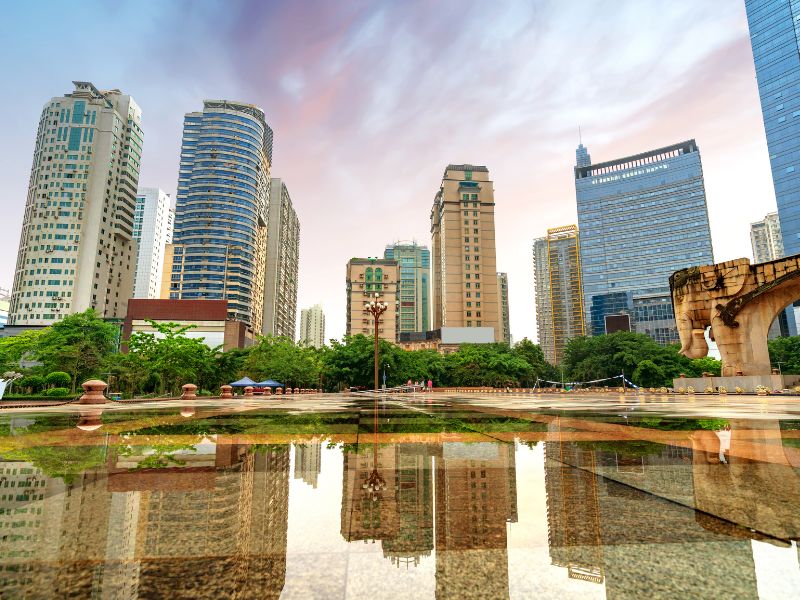
A Cultural Melting Pot
Vibrant Diversity: Nanning serves as a cultural bridge between China and the ASEAN countries, creating a melting pot of ethnic groups, including the Zhuang, Han, and others. This diversity is reflected in the city’s vibrant festivals, such as the colorful Zhuang Ethnic Song Festival, and its daily life, offering visitors a rich tapestry of cultural experiences.
Urban Green Spaces
Oasis in the City: One of Nanning’s most enchanting features is its commitment to preserving nature amidst urban development. Qingxiu Mountain, a lush expanse right in the city’s outskirts, offers hiking trails, ancient temples, and breathtaking views. Don’t miss a stroll through the tranquil Nanhu Park, a favorite among locals for morning exercises and leisurely walks.
Culinary Delights
Flavors of the South: Dive into the world of Guangxi cuisine with Nanning’s street food scene. From the spicy and sour flavors of Luosifen to the sweet treats at local bakeries, your taste buds are in for a treat. The local markets are also a culinary adventure, bustling with vendors selling fresh fruits, vegetables, and regional specialties.
Historical Layers
Walk Through Time: Nanning is not just about natural beauty and food; it’s also rich in history. Visit the Guangxi Museum of Nationalities to explore the region’s diverse cultural heritage, or step back in time at the ancient Zhenning Fort, which offers insights into China’s dynastic past.
Modern Attractions
Dynamic Modernity: Witness the modern side of Nanning at the Guangxi Science and Technology Museum or enjoy a day of fun at the Nanning Zoo. The city’s skyline, dotted with sleek skyscrapers, is a testament to its rapid growth and modernization, providing a stark contrast to its ancient landmarks.
Why Visit Nanning?
Nanning offers a journey of discovery and delight. So pack your bags, bring an adventurous spirit, and get ready to explore one of China’s most dynamic cities.
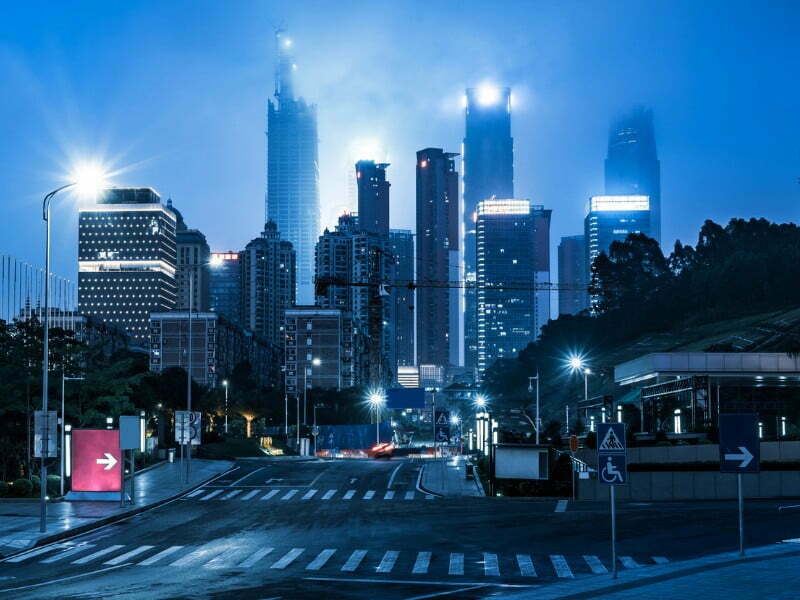
Nanning City Guide: A Brief History Of Nanning, China
Ready to unravel the rich historical tapestry of Nanning? This bustling city, now the vibrant heart of the Guangxi Zhuang Autonomous Region, boasts a history that stretches back over thousands of years. From its early days as a strategic military outpost to its current status as a thriving gateway to Southeast Asia, Nanning’s past is as colorful as its present. Let’s take a stroll through time. We’ll discover the historical milestones that have shaped this fascinating city.
Ancient Beginnings
Foundation Stones: Nanning’s story begins in the Qin Dynasty, when it was established as an important military outpost. Its strategic location made it a key player in the defense against potential invasions from the south. Over the centuries, it grew from a defensive bastion into a bustling trading hub, taking advantage of its rich natural resources and favorable position along ancient trade routes.
Dynastic Influences
Era of Expansion: During the Tang and Song dynasties, Nanning expanded beyond its military roots to become a cultural and economic center. It was during these times that Nanning was officially recognized as the capital of the region, a status that brought with it increased wealth and a burgeoning population. The city’s influence continued to grow, bolstered by its role in regional governance and trade.
Colonial and War Times
A Turbulent Phase: Fast forward to more recent history, and Nanning’s strategic location once again put it at the forefront of conflict and change. During the late 19th and early 20th centuries, it was a battleground for various colonial powers and warlords. Later, during World War II and the Chinese Civil War, Nanning served as a crucial military base and a refuge for those fleeing the Japanese invasion.
The Reform Era
Modern Transformation: With the advent of China’s economic reforms in the late 20th century, Nanning pivoted from a regional administrative center to a modern metropolis. The establishment of the China-ASEAN Expo in 2004 marked a new era for Nanning, positioning it as a gateway city to Southeast Asia. This international exposure brought rapid development, transforming its skyline and economic prospects.
Cultural Heritage Today
Living History: Despite its rapid modernization, Nanning has managed to preserve its rich cultural heritage. The city is a living museum, dotted with historical landmarks such as the ancient Yongning Pagoda, built during the Ming Dynasty, and the Qingxiu Mountain, which has been a place of leisure for locals since the Tang Dynasty. These sites, along with vibrant local traditions in music, dance, and art, keep Nanning’s storied past alive.
Why Nanning’s History Matters
Nanning offers a unique blend of history and progress. So, as you wander through Nanning, remember that every path you explore is steeped in history, and every view tells a story. Welcome to Nanning, where history and modernity meet.
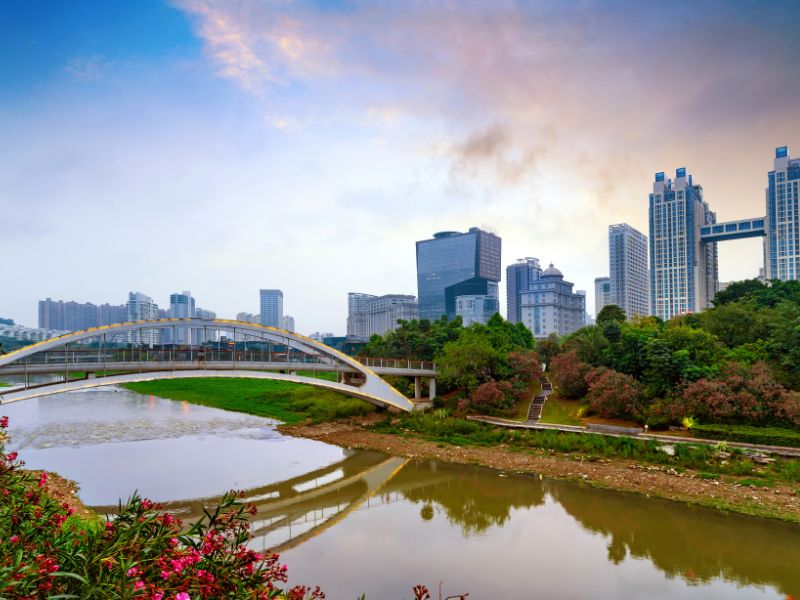
Nanning Top Attractions and Best Places to Visit in China
Situated within a reasonable train ride from Hanoi, Nanning is the first place many Southeast Asian backpackers arrive in China.
While it is far from the biggest urban destination in the country, its proximity to one of Asia’s most stunning waterfalls makes it a great place to spend a few days while plotting your next move.
Begin your visit to Nanning by getting familiar with local history at the Guangxi Museum of Nationalities. Within its brilliant modernist walls (which are shaped like a bronze drum, a musical instrument common to many of this province’s people), you’ll find an expansive cultural institution dedicated to telling the stories of Guangxi’s twelve different ethnic groups.
2,000 years of history is on display here, with traditional clothing, musical instruments, tools, silverware, masks, and other items which define ethnic groups from Zhuang to Dong. The level of detail in the exhibits is truly extraordinary, so be sure not to miss this place even if you aren’t a big museum person.
If you missed it when crossing over into China from Vietnam, make plans to backtrack to the border on a day trip from Nanning so you can pay a visit to Detian Falls. A tiered series of waterfalls which straddles the international boundary between Vietnam and China, these powder blue beauties are essentially the tropical equivalent of the Plitvice Lakes Waterfalls in Croatia.
More Attractions
This isn’t a tiny complex of falls by any stretch of the imagination, as it ranks as the largest in all of Asia. This will be a long day, as 140 kilometres separates Nanning from Detian Falls, but it will be worth it for the amazing views to which you’ll be privy during your time there.
There are many limestone karst mountains in Guangxi Province – this means there are quite a few caves around that are just begging to be explored. If getting underground is your thing, then be sure to make time for Yiling Cave during your visit to Nanning.
Unlike rough caves which are only suitable for geared-up spelunkers, this cavern is accessible to casual walkers, as its passages are wide, high, and are lit up (in an assortment of colours), making it easy to admire its many stalactites and stalagmites.
While Nanning lacks the old architecture that cities elsewhere in China have, it is close by to Yangmei Ancient Town. A charming community that is a world away from the modern, hectic life that millions of Chinese live every day, coming here will almost take you back in time several hundred years to the times of the Dynasties.
A peaceful place rooted in tradition, many prominent scholars have come from this humble town, and its beauty has attracted numerous film directors to shoot their movies here over the years. As you walk through its narrow streets, you’ll see multiple examples of architecture typical of the Ming and Qing Dynasties.
Situated only 30 kilometres away from Nanning proper, Yangmei makes for a great day trip for those who are short on time.
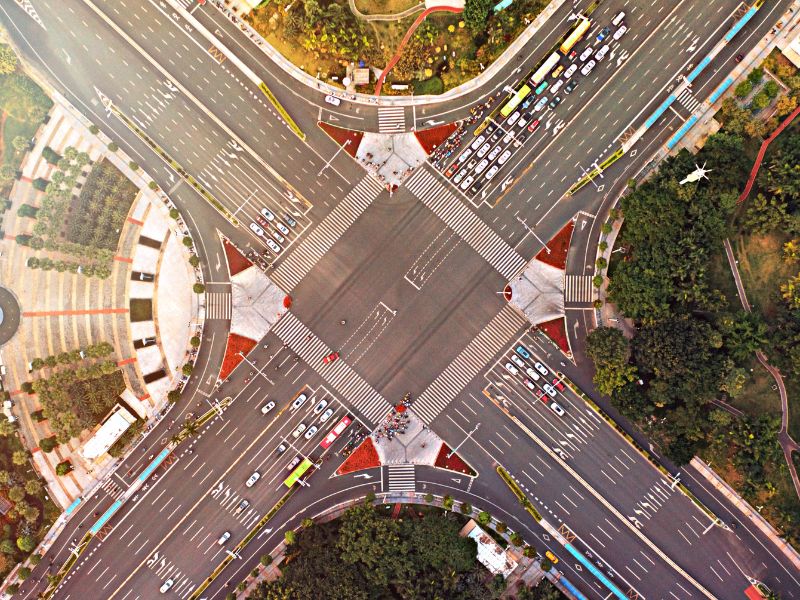
Other Cultural Attractions: Trip to Nanning, China
Get above the streets of Nanning and surround yourself with natural beauty by taking a trip up to Qingxiu Mountain. While more of a large hill than an actual mountain, the privileged views it allows of the city and the surrounding landscape still makes it a worthwhile attraction.
Atop its summit, you’ll find placid lakes, pavilions, and Taoist temples which compliments this park’s natural beauty perfectly. Feel like doing something that will make you feel like a member of the bourgeoisie? There is an 18 hole golf course at the base where you can get in a few swings if it has been too long since you have played this great game.
When the heat of this city has become too much for you to bear, chill out and relax for a bit by dropping by Nanning People’s Park. With scenic pavilions, lakes, bridges, an amusement park for children, and a fortification once occupied by a warlord, it is a peaceful spot to hang out when stress reduction is a priority.
Other Attractions
Hungry? There are numerous food vendors which serve up dishes from across China in and around the park, so find an option which appeals to you and indulge in some authentic Chinese food.
Learn a bit about traditional Chinese medicinal herbs by poking around the Guangxi Medical Botanical Garden. This is not a tiny collection of plants, as there are over 2,000 kinds of medicinal flora which can heal a variety of ailments.
End your time in Nanning by spending an evening grazing at a variety of street food stalls at the Zhongshan Road Night Market. Seafood lovers are taken care of well here, as many vendors deal in foods made from the latest catch. With serving hours stretching into the small hours of the morning, late diners needn’t worry about missing out on the action.
source: Yahua on YouTube
Top 20 Things To Do in Nanning, China For Visitors
Here are the top 20 things to do in Nanning:
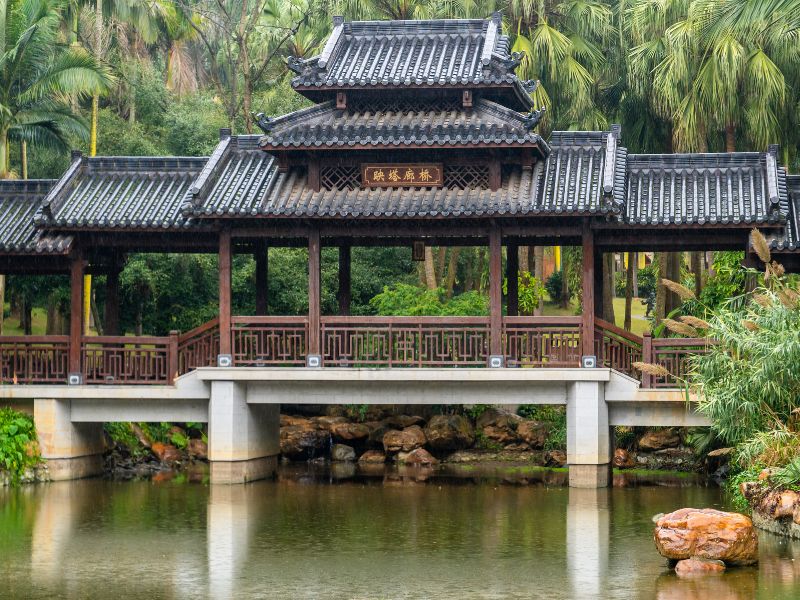
1. Explore Qingxiu Mountain Scenic Spot
Dubbed the “Green Lungs” of Nanning, Qingxiu Mountain is a paradise for nature enthusiasts. Wander through well-maintained paths, ancient temples, and stunning gardens like the famed Phoenix Lake. The mountain offers panoramic views of the city, making it a photographer’s dream come true. It’s the perfect escape from the hustle and bustle of urban life.
- Natural beauty: Immerse yourself in lush greenery and serene landscapes.
- Cultural sites: Visit ancient temples nestled within the mountain.
- Stunning vistas: Capture breathtaking views of Nanning from elevated spots.
2. Visit Guangxi Museum of Nationalities
Dive deep into the rich cultural tapestry of Guangxi at the Guangxi Museum of Nationalities. The museum showcases traditional costumes, artifacts, and exhibits from the Zhuang, Yao, Miao, and other ethnic minorities. The building itself is a masterpiece, reflecting local ethnic designs. It’s an educational journey through the diverse traditions of the region.
- Cultural immersion: Learn about Guangxi’s diverse ethnic groups.
- Unique artifacts: Explore traditional costumes and historical items.
- Architectural marvel: Admire the museum’s ethnically inspired design.
3. Explore Nanning Zoo
A favorite among families, Nanning Zoo is home to a wide array of animals, including rare and endangered species. Wander through lush habitats that mimic the animals’ natural environments. Don’t miss the chance to see the adorable giant pandas and majestic Asian elephants. It’s both an entertaining and educational experience for all ages.
- Wildlife diversity: Discover animals from around the globe.
- Conservation focus: Learn about efforts to protect endangered species.
- Family-friendly: Enjoy interactive exhibits and animal shows.
4. Stroll Through Renmin Park
Also known as People’s Park, this is one of Nanning’s largest and most beloved public spaces. Meander through beautiful lakes, traditional pavilions, and colorful flower beds. The park buzzes with life, especially in the mornings with locals practicing tai chi. It’s a slice of daily Nanning life and a serene spot to unwind.
- Scenic beauty: Relax amidst picturesque landscapes.
- Cultural activities: Witness locals engaging in traditional exercises.
- Year-round events: Participate in festivals and recreational activities.
5. Visit the Guangxi Science and Technology Museum
Ignite your curiosity at the Guangxi Science and Technology Museum. Featuring interactive exhibits on space, physics, and biology, it’s a playground for the inquisitive mind. Experience the wonders of the universe at the planetarium or get thrilled in the 4D cinema. It’s both fun and educational, perfect for families and science enthusiasts.
- Interactive learning: Engage with hands-on scientific exhibits.
- Planetarium shows: Explore the cosmos in immersive displays.
- Family fun: Activities and exhibits suitable for all ages.
6. Shop at Zhongshan Road Night Market
As the sun sets, Zhongshan Road Night Market comes alive with vibrant energy. Explore stalls offering everything from mouth-watering street food to trendy clothes and unique souvenirs. Savor local delicacies like barbecue skewers and rice noodle dishes. The bustling atmosphere and diverse offerings make it a must-visit spot.
- Culinary delights: Taste authentic Guangxi cuisine.
- Shopping spree: Find bargains on clothes, accessories, and more.
- Lively ambiance: Experience the hustle and bustle of a Chinese night market.
7. Walk Along the Yong River Promenade
Take a leisurely stroll along the Yong River Promenade, a scenic waterfront area perfect for relaxation. Enjoy beautiful views of the river, especially during sunset when the sky paints a mesmerizing palette. The promenade is dotted with green spaces, cafes, and art installations. It’s a popular spot for social gatherings and outdoor activities.
- Scenic views: Admire the tranquil river landscape.
- Outdoor activities: Ideal for jogging, biking, or a peaceful walk.
- Cafés and art: Stop by local eateries and enjoy public artworks.
8. Experience the Guangxi Cultural Arts Center
Immerse yourself in the arts at the Guangxi Cultural Arts Center. This modern complex hosts performances, exhibitions, and cultural events showcasing regional talents. The architecture itself is visually striking, reflecting Guangxi’s cultural heritage. Attending a show here offers a deep dive into local and international art forms.
- Live performances: Enjoy concerts, theater, and dance shows.
- Cultural exhibitions: Explore galleries featuring local artists.
- Architectural beauty: Marvel at the center’s innovative design.
9. Relax in Nanhu Lake Park
Find tranquility in the heart of the city at Nanhu Lake Park. Centered around a vast lake, it’s an urban oasis perfect for relaxation. Rent a boat to explore the calm waters or enjoy a picnic on the lush lawns. The park’s serene pathways are lined with vibrant flora, making every visit a breath of fresh air.
- Boating fun: Paddle across the peaceful Nanhu Lake.
- Scenic walks: Stroll through beautifully landscaped gardens.
- Picnic spots: Unwind with friends and family in nature.
10. Discover the Nanning Folk Song Lake Scenic Area
Celebrate Guangxi’s rich folk traditions at the Folk Song Lake Scenic Area. The park features traditional architecture, cultural performances, and landscaped gardens around a picturesque lake. Experience the melodies of local ethnic groups and immerse yourself in their customs. It’s a delightful blend of culture and natural beauty.
- Cultural performances: Enjoy live folk music and dances.
- Traditional architecture: Explore buildings reflecting local designs.
- Scenic beauty: Revel in the tranquil lake and lush surroundings.
11. Visit the Detian Waterfall
Although a bit of a journey from Nanning, the Detian Waterfall is worth every mile. As one of Asia’s largest transnational waterfalls, it straddles the border between China and Vietnam. Marvel at the cascading waters surrounded by verdant landscapes. Boat rides and nearby caves add to the adventure.
- Natural wonder: Witness the majestic Detian Waterfall up close.
- Scenic adventure: Explore surrounding caves and trails.
- Photography hotspot: Capture breathtaking natural scenery.
12. Explore the Baise Uprising Memorial Hall
Step into history at the Baise Uprising Memorial Hall. Dedicated to an important event in Chinese revolutionary history, the museum offers insights into Guangxi’s role in the Communist movement. Exhibits include historical documents, photographs, and personal stories. It’s an educational journey through a pivotal period in China’s past.
- Historical exhibits: Learn about the Baise Uprising in depth.
- Educational insight: Understand Guangxi’s impact on national history.
- Interactive displays: Engage with multimedia presentations.
13. Enjoy Wuxiang Square
Experience the vibrant energy of Nanning at Wuxiang Square. Known for its modern design and cultural significance, the square is a hub for public events and festivities. Surrounded by shopping centers and restaurants, it’s a perfect place to soak up the city’s atmosphere. From cultural performances to casual hangouts, there’s always something happening here.
- Public events: Join in on festivals and celebrations.
- Urban exploration: Shop and dine in nearby establishments.
- Modern architecture: Admire the sleek design of the square.
14. Sample Local Cuisine
Embark on a culinary adventure through Nanning’s diverse food scene. From spicy hot pots to delectable rice noodle dishes, there’s something to satisfy every palate. Don’t miss luosifen (snail rice noodles), a local delicacy that’s a must-try. Street markets and local eateries offer an authentic taste of Guangxi’s flavors.
- Food markets: Explore stalls brimming with local delicacies.
- Authentic dishes: Taste traditional Guangxi and Chinese cuisine.
- Culinary diversity: Enjoy a wide range of flavors and styles.
15. Explore Yangmei Ancient Town
Travel back in time at Yangmei Ancient Town, located on Nanning’s outskirts. This well-preserved town boasts Qing Dynasty architecture and a traditional lifestyle. Wander through ancient streets, visit historic buildings, and immerse yourself in the town’s rich history. It’s a peaceful retreat offering picturesque views and a glimpse into China’s past.
- Historic charm: Explore centuries-old buildings and alleys.
- Cultural immersion: Experience traditional festivals and markets.
- Scenic tranquility: Enjoy the serene countryside atmosphere.
16. Visit the Nanning Mosque
Discover a different facet of the city’s cultural mosaic at the Nanning Mosque. This beautiful place of worship reflects the Islamic heritage within Nanning. Visitors are welcome to admire its architecture and learn about the local Muslim community. It’s a peaceful spot promoting understanding and diversity.
- Architectural elegance: Appreciate the mosque’s design and details.
- Cultural diversity: Learn about Islam’s presence in Nanning.
- Community insight: Observe daily practices and traditions.
17. Enjoy Jinhuacha Park
Escape to Jinhuacha Park, renowned for its stunning lotus ponds and tranquil landscapes. The park features traditional pavilions, winding bridges, and a variety of flora. It’s an ideal spot for photography, leisurely walks, or family picnics. The serene environment provides a refreshing break from city life.
- Natural beauty: Admire blooming lotus flowers in season.
- Peaceful strolls: Wander through lush, scenic paths.
- Family-friendly: Perfect for outings with children.
18. Take a Trip to Longhu Mountain
Adventure awaits at Longhu Mountain, a short drive from Nanning. Known for dramatic rock formations and lush forests, it’s a haven for hikers and nature lovers. Explore ancient Taoist temples nestled within the mountain, adding a spiritual touch to your journey. The scenic vistas from the peaks are simply breathtaking.
- Hiking trails: Trek through diverse and scenic routes.
- Spiritual sites: Visit historic Taoist temples.
- Stunning views: Capture panoramic landscapes from mountaintops.
19. Shop at Shanglin Floating Market
Experience a unique shopping adventure at the Shanglin Floating Market. Vendors sell goods directly from boats along the river, offering fresh produce, seafood, and handicrafts. It’s a lively and colorful spectacle that provides a glimpse into traditional commerce on the water. Don’t forget your camera—it’s a photo opportunity like no other.
- Unique shopping: Buy goods from boat vendors.
- Local interaction: Engage with friendly merchants.
- Cultural experience: Witness traditional river commerce.
20. Attend the Nanning International Folk Song Arts Festival
Celebrate the universal language of music at the Nanning International Folk Song Arts Festival. This annual event brings together artists from around the world to showcase diverse folk music and dance. Enjoy concerts, workshops, and street performances in a vibrant and inclusive atmosphere. It’s a fantastic opportunity to immerse yourself in Guangxi’s musical heritage.
- Global performances: See artists from various countries.
- Cultural exchange: Participate in workshops and activities.
- Festive atmosphere: Enjoy the lively spirit of the festival.
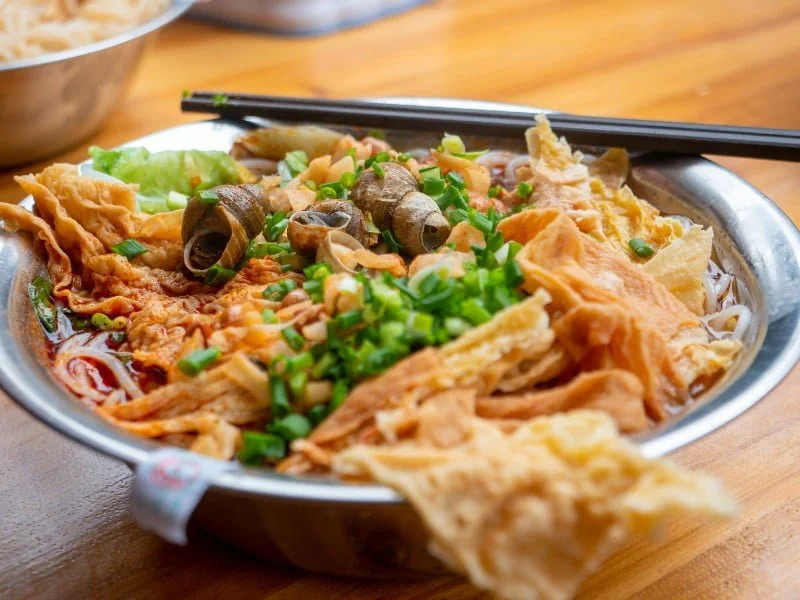
What To Eat and Drink in Nanning, China
From spicy and sour sensations to sweet, deep-fried treats, here’s your guide to the must-try eats and drinks in this dynamic city.
Iconic Nanning Dishes
1. Luosifen (螺蛳粉): Dive into Nanning’s most infamous and beloved dish, Luosifen, a spicy rice noodle soup made with river snails and a mix of tofu, pickled bamboo shoots, fresh vegetables, and a punch of chili. The unique, pungent aroma and bold flavors make it a must-try for any adventurous foodie.
2. Old Friend Noodles (老友粉): Similar to Luosifen but without the snails, Old Friend Noodles are a comfort food made with sour pickles, minced pork, fried peanuts, and green onions. It’s a less intense but equally satisfying local favorite.
3. Guangxi BBQ: Enjoy a local take on barbecue, where skewers of meat, seafood, and vegetables are grilled to perfection with a blend of local herbs and spices. It’s perfect for an evening snack while exploring Nanning’s lively night markets.
4. Stuffed Snails (田螺酿): These are river snails stuffed with a mixture of pork and herbs, steamed to bring out a rich blend of earthy and meaty flavors. It’s a popular dish in Guangxi and a testament to the region’s innovative use of local ingredients.
Sweet Treats
5. Laoyou Rice Noodles (老友米粉): This sweet and slightly spicy dish combines the smooth texture of rice noodles with a flavorful broth, enriched with peanuts, pickled vegetables, and fresh herbs. It’s a delightful contrast to the more intense flavors typical of Nanning’s street food.
6. Shaved Ice Desserts: For a sweet relief from the heat, try one of Nanning’s shaved ice desserts, topped with fresh fruits, jelly, sweet beans, and drizzled with condensed milk. Popular variations include mango, durian, and mixed fruit options.
Refreshing Beverages
7. Sugarcane Juice: Pressed fresh from sugarcane, this juice is a natural thirst-quencher found all over the city. It’s sweet, refreshing, and energizing on a hot day.
8. Herbal Teas: Nanning’s locals love their herbal teas, which come in many varieties, each believed to offer different health benefits. Popular choices include chrysanthemum tea, lychee wood leaf tea, and bitter gourd tea, all of which provide a soothing experience.
Local Snacks
9. Bamboo Rice (竹筒饭): Rice and other ingredients such as chicken or pork are stuffed into bamboo tubes and then cooked over a fire. The bamboo imparts a distinctive flavor that’s smoky and comforting.
10. Nanning Dim Sum: While not as famous as Cantonese dim sum, Nanning’s version offers a variety of bite-sized delights such as steamed buns, dumplings, and rolls, perfect for sampling different local flavors in one sitting.
Street Food Experiences
11. Night Markets: No visit to Nanning would be complete without a trip to one of its bustling night markets, like Zhongshan Road or Chaoyang Square, where you can indulge in a variety of snacks, from grilled meats and fresh seafood to sweet treats and local delicacies.
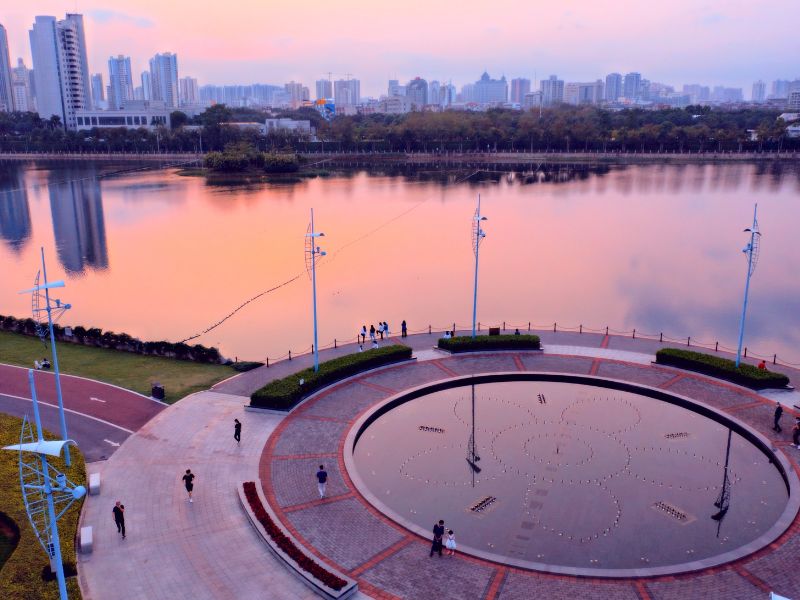
Tours For Visitors To Nanning, China
From immersive cultural experiences to adventurous excursions in the lush landscapes surrounding the city, here’s a list of top tours that promise to enrich your visit to Nanning.
1. City Highlights Tour
Discover the best of Nanning with a comprehensive city tour that covers all the major attractions. Visit the iconic Qingxiu Mountain to see its beautiful pagodas and lush landscapes, explore the expansive Nanhu Lake Park, and delve into history at the Guangxi Museum. This tour is perfect for first-time visitors wanting to get an overview of what the city has to offer.
2. Cultural Immersion Tour
Experience the unique cultural heritage of Nanning by visiting traditional Zhuang villages. Learn about the Zhuang people, the largest ethnic minority in Guangxi, through village tours that include folk performances, traditional crafts workshops, and local cuisine tastings. These tours offer a deep dive into the local customs and lifestyle.
3. Food and Market Tour
Tantalize your taste buds with a culinary tour through Nanning’s bustling markets and street food stalls. Sample local delicacies such as Luosifen (snail rice noodles), bamboo rice, and various dim sum items. A knowledgeable guide will explain the ingredients and preparation methods that make Nanning’s cuisine unique.
4. Nature and Wildlife Tour
For nature lovers, a tour to the nearby Damingshan Mountain or the Nanning Zoo and Botanical Garden can be a delightful escape. Explore the region’s diverse flora and fauna, enjoy hikes through scenic trails, and learn about local conservation efforts. These tours are great for families and anyone looking to connect with nature.
5. Tea Culture Tour
Discover the art of Chinese tea with a tour focused on Nanning’s tea culture. Visit local tea houses, participate in tea tastings, and learn about the different types of Chinese tea and their health benefits. This relaxing tour is perfect for those who wish to unwind and enjoy a slower pace.
6. Cycling Tour
Explore Nanning’s green spaces and urban sights on a guided cycling tour. This eco-friendly option provides a different perspective of the city, covering more ground than walking tours. Cycle along the Yong River, through various parks, and along less-traveled paths that offer a glimpse into Nanning’s daily life.
7. Nightlife and Entertainment Tour
Experience Nanning’s vibrant nightlife with a tour that includes visits to popular bars, night markets, and live music venues. Discover the best spots for entertainment, try local brews, and enjoy the lively atmosphere of the city after dark. This tour is great for young travelers and those interested in the social scene.
8. Handicraft Workshop Tour
Participate in a hands-on tour where you can learn traditional crafts such as Chinese calligraphy, lantern making, or embroidery. These workshops are often hosted by local artisans who provide insights into their crafts and cultural significance. It’s a perfect way to bring back a handmade souvenir from your trip.
9. River Cruise Tour
Take a leisurely cruise along the Yong River to see Nanning from a different vantage point. Enjoy the scenic views of the city’s waterfront, learn about the river’s importance to the region, and relax as you float past historical and modern landmarks. This tour combines relaxation with sightseeing, ideal for an evening outing.
10. Business and Innovation Tour
For those interested in economic development and technology, a tour of Nanning’s tech parks and business districts can provide insights into the city’s growth as a business hub in Southeast Asia. Visit startups, tech companies, and innovation centers to see how Nanning is positioning itself in the global market.

Nanning Accommodations Guide: Hotels, Guesthouses and Hostels
Here’s a detailed travel guide to some of the best places to stay in Nanning, tailored to enhance your visit.
Luxury Hotels
1. Nanning Marriott Hotel Located in the heart of the business district, the Nanning Marriott Hotel offers sophisticated elegance with its spacious rooms, outstanding service, and excellent amenities including a rooftop pool, spa, and multiple dining options. It’s perfect for travelers seeking a luxurious retreat.
2. Shangri-La Hotel, Nanning Situated in a prime location near Qingxiu Mountain, this hotel combines luxury with breathtaking views. The Shangri-La is known for its exceptional service, beautiful rooms, and a tranquil garden that guests can explore. The hotel also features a state-of-the-art health club and several top-notch restaurants.
Mid-Range Hotels
3. Yongjiang Hotel Offering great value for money, Yongjiang Hotel is conveniently located near the Yong River, providing scenic views and easy access to local attractions. The hotel boasts modern facilities, including comfortable rooms, a fitness center, and several dining options.
4. Landmark Hotel This hotel stands out for its central location, making it ideal for visitors interested in exploring Nanning’s vibrant street life and local markets. The Landmark Hotel offers clean, well-appointed rooms with excellent customer service at a competitive price.
Budget Hotels
5. GreenTree Inn Nanning East Wuyi Road Hotel A great option for budget-conscious travelers, this hotel provides basic, clean accommodations without breaking the bank. It’s situated a short distance from major tourist spots, offering convenience and comfort.
6. 7 Days Inn With multiple locations across Nanning, 7 Days Inn is a reliable choice for travelers looking for affordability and comfort. These hotels are typically located near public transportation, making it easy to explore the city.
Hostels and Guesthouses
7. Nanning Travelling With Hostel Popular among backpackers, this hostel offers a friendly, vibrant atmosphere with both dormitory-style and private rooms. It’s a fantastic place to meet other travelers and includes amenities like a communal kitchen, laundry facilities, and a cozy lounge area.
8. Little Forest Hostel Located near several parks and recreational areas, Little Forest Hostel is perfect for those who enjoy nature. It offers a peaceful retreat with simple, clean accommodations and a homey feel.
Boutique and Unique Stays
9. Mingyuan Xindu Hotel This boutique hotel offers a unique cultural experience with its traditional Zhuang and Han architecture and interior design. Guests can enjoy culturally themed rooms, a traditional tea house, and authentic local cuisine at their restaurant.
10. The Flower Hotel This creatively designed hotel integrates art and comfort, offering guests a visually stimulating environment along with all the modern amenities. It’s particularly popular among young travelers and art enthusiasts.
Apartment Rentals
11. Serviced Apartments For those planning longer stays or needing more space, serviced apartments in Nanning provide a home away from home. These apartments are fully furnished and come with services like housekeeping, 24-hour security, and sometimes even leisure facilities like a pool or gym.
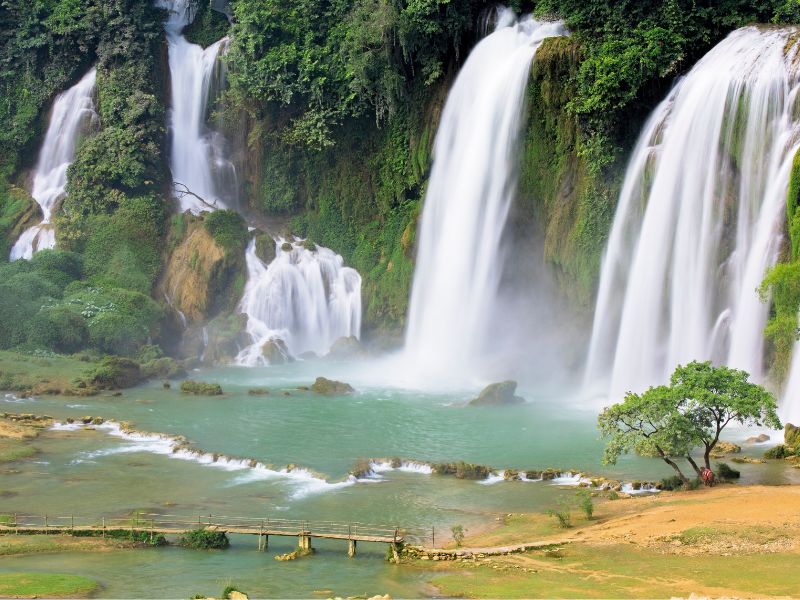
Day Trips From Nanning, China
Here’s a list of the top day trips to consider, ensuring that your adventures around Nanning are as enriching and enjoyable as the city itself.
1. Detian Waterfall
Cross the border into a natural wonderland to witness the Detian Waterfall, the fourth largest transnational waterfall in the world, shared with Vietnam. The surrounding area is a scenic marvel, complete with lush forests and a vibrant array of biodiversity. Boat trips on the river offer close-up views of the waterfall, creating perfect photo opportunities. The area also features smaller waterfalls and peaceful hiking trails to explore.
2. Qingxiu Mountain
Just a short drive from Nanning, Qingxiu Mountain offers a tranquil escape with its well-manicured gardens, ancient temples, and panoramic views of the city. This “Green Lungs” of Nanning is perfect for a leisurely day of walking through bamboo groves and alongside ornamental lakes. Several pavilions and pagodas provide rest stops and vantage points to enjoy the lush surroundings. The mountain is a favorite among locals for family picnics and spiritual solace.
3. Longhu Mountain
Visit Longhu Mountain to see the famed Huashan Cliff Murals, ancient rock drawings that date back thousands of years. The area is also known for its dramatic karst landscape, with opportunities for rock climbing and cave exploration. The site holds significant archaeological and cultural importance, offering insights into the early life of the region’s indigenous peoples. Guided tours are available, providing historical context and ensuring you don’t miss any hidden gems.
4. Bama Yao Autonomous County
Explore the culture and traditions of the Yao people in Bama, an area famous for the longevity of its residents. Visit local villages to learn about the Yao lifestyle and traditional practices that contribute to their health and longevity. The scenic beauty of Bama, with its clear rivers and verdant hills, complements its cultural richness. Health tourism is particularly popular here, with visitors coming to explore the secrets to a longer life.
5. Liuzhou
A two-hour drive will take you to Liuzhou, where you can visit the famous Liujiang Man site, one of the oldest human remains found in South China. The city is also home to the picturesque Karst landscape, best viewed from Ma’anshan Park. Liuzhou offers a mix of urban attractions and natural beauty, making it a comprehensive day trip option. Don’t miss the local Liuzhou snail noodles, a culinary specialty.
6. Yiling Cave
Discover the underground marvel of Yiling Cave, an extensive cave system known for its stunning stalactites and stalagmites. The cave is beautifully illuminated, highlighting the various rock formations and the small lake inside. It’s a cool retreat from the tropical heat and provides a great educational experience for all ages. Guided tours explain the geological history of the cave and its ecological importance.
7. Guilin
Although a bit farther, a high-speed train can whisk you to Guilin in about two hours, making it feasible for a longer day trip. Famous for its breathtaking limestone karsts along the Li River, Guilin is a must-visit for nature enthusiasts and photographers. Cruise on the Li River to Yangshuo to see some of China’s most iconic landscapes. The city itself also offers numerous parks, caves, and cultural sites to explore.
8. Tongling Grand Canyon
Experience the natural beauty of Tongling Grand Canyon, with its vertical cliffs, lush vegetation, and cascading waterfalls. The area offers excellent trekking opportunities, with trails leading down into the canyon and alongside streams. The suspension bridge across the canyon provides a thrilling walk with spectacular views. It’s an ideal spot for adventure seekers and nature lovers alike.
9. Mingshi Scenic Area
Venture to Mingshi Scenic Area to enjoy the “Lesser Guilin” landscapes of rolling hills and winding rivers. Visitors can take a bamboo raft down the river, passing through dramatic karst formations and traditional villages. The area is also great for cycling and photography, offering a quieter alternative to the more touristy spots. Mingshi provides a picturesque slice of rural China, complete with traditional architecture and peaceful natural settings.
10. Beihai
Head to the coast and visit Beihai, known for its beautiful beaches and the historic Beihai Old Street. The Silver Beach is reputed to be one of the best in China, offering clean sand and clear waters. Beihai also serves as a gateway to explore nearby islands and enjoy fresh seafood. The city’s blend of beach leisure and cultural exploration makes it a rewarding day trip from Nanning.
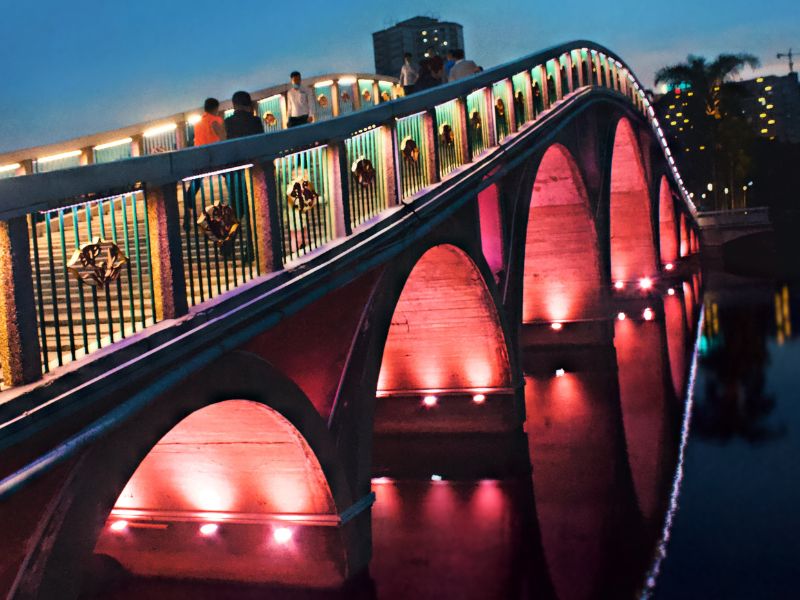
Nanning Transportation Guide
Here’s a detailed breakdown of the various transportation options available in the city.
By Air
1. Nanning Wuxu International Airport (NNG) Located about 32 kilometers southwest of the city center, Nanning Wuxu International Airport serves as the main gateway for domestic and international flights. The airport is well-connected to the city via the Airport Express bus, taxis, and private car services. It offers flights to major Chinese cities and some international destinations in Southeast Asia.
Public Transit
2. Nanning Metro The Nanning Metro system is a fast and efficient way to get around the city. Currently, there are several operational lines with more under construction or planned, which connect major districts, tourist attractions, and business areas. It’s a cost-effective and reliable option, especially during peak traffic hours.
3. Public Buses Nanning’s extensive network of public buses covers the entire city and is an economical way to travel. Buses run frequently and reach areas that are not accessible by metro. However, navigating the bus system might require some basic Mandarin skills or assistance from a translation app, especially to understand routes and stops.
On the Road
4. Taxis Taxis are plentiful and available throughout Nanning. They are metered, and fares are reasonable, but it’s advisable to have the address of your destination written in Chinese to avoid any language barrier issues. During rush hours, securing a taxi might be challenging, so planning your travel time wisely is crucial.
5. Rideshare Apps Apps like Didi Chuxing provide a convenient alternative to traditional taxis and are often preferred for their ease of use and fixed pricing. These apps offer the option to choose different levels of service, from economical car-pools to more luxurious private cars.
Personal and Alternative Transport
6. Bicycle Sharing Nanning supports green transport options, including an extensive bicycle-sharing system. Bicycles can be rented easily via apps and are a great way to navigate the city while enjoying its beautiful green spaces. Dedicated bike lanes are available in many parts of the city, making cycling a safe and enjoyable option.
7. Scooter Rentals Electric scooters are also available for rent through various apps. They offer a quick way to get around, especially in congested areas where larger vehicles might get stuck in traffic. Just be sure to follow local traffic regulations and wear a helmet for safety.
Long-Distance Travel
8. Nanning East Railway Station For travel outside the city, the Nanning East Railway Station serves as the main hub for high-speed trains to major Chinese cities like Guangzhou, Shanghai, and Beijing. It’s also the starting point for many regional trains that connect smaller towns and rural areas in Guangxi.
9. Coach Buses Long-distance buses from Nanning can take you to various parts of Guangxi and neighboring provinces. The main bus terminal offers regular services to popular destinations such as Guilin, Beihai, and even cross-border routes to Vietnam.
Waterways
10. River Cruises Explore Nanning from a different perspective by taking a river cruise along the Yong River. This scenic route offers a unique view of the city’s skyline and is a relaxing way to spend an afternoon.

Where To Visit After Your Trip To Nanning?
Here’s a list of places to visit after your trip to Nanning, each offering unique experiences and adventures.
1. Guilin
Just a few hours from Nanning by high-speed train, Guilin is renowned worldwide for its stunning karst landscapes along the Li River. Take a river cruise from Guilin to Yangshuo to witness the breathtaking scenery that has inspired painters and poets for centuries. Explore the Reed Flute Cave, a natural limestone cave decorated with multicolored lighting. Guilin also offers a vibrant night market and numerous parks, providing a perfect blend of natural beauty and urban convenience.
2. Beihai
Head to Beihai for some of the best beaches in China, located about 200 kilometers from Nanning. Silver Beach is famous for its white sand and crystal-clear waters, ideal for swimming and sunbathing. The city’s Old Street offers a glimpse into its colonial past with well-preserved European architecture. Additionally, Beihai is a gateway for exploring the nearby islands, making it a great spot for a relaxing seaside getaway.
3. Detian Waterfall
Visit one of the largest transnational waterfalls in Asia, located on the border between Vietnam and China. Detian Waterfall offers spectacular views as it cascades down a three-tiered cliff in a lush, green landscape. The area around the waterfall is excellent for hiking and photography, providing numerous vantage points. This natural wonder is a must-see for nature lovers and those looking for a tranquil escape from urban life.
4. Yangshuo
Yangshuo is a paradise for outdoor enthusiasts, famous for its dramatic karst mountain peaks and serene rivers. Here, you can engage in activities like rock climbing, river rafting, and biking through the countryside. The town itself is lively and offers a range of local and international cuisine, as well as a bustling night market. Cultural shows such as the Impression Liu Sanjie light up the night with performances set against the natural backdrop of the Li River.
5. Longsheng Rice Terraces
Discover the Longsheng Rice Terraces, which are about a four-hour drive from Nanning. These intricately constructed terraces, also known as the Dragon’s Backbone, change colors with the seasons, from lush green in spring to golden yellow in autumn. The area is also home to several ethnic minorities, including the Zhuang and Yao peoples, where you can learn about their cultures and traditions. Hiking through the terraces provides panoramic views and the opportunity to experience rural Chinese life.
6. Hanoi, Vietnam
For an international excursion, consider a trip to Hanoi, which is accessible by a direct flight from Nanning. Vietnam’s capital offers a rich tapestry of French colonial architecture, vibrant street markets, and a storied history evident in sites like the Ho Chi Minh Mausoleum and the Old Quarter. Enjoy the unique blend of Southeast Asian and French cuisines, and don’t miss a traditional water puppet show. Hanoi serves as a fascinating contrast to Nanning, showcasing the diverse cultural influences in the region.
7. Hong Kong
Experience the dynamic city of Hong Kong, with direct flights available from Nanning. This global metropolis is a hub of business, arts, and fashion, featuring iconic skylines and lush landscapes. Explore the bustling markets, world-class shopping, and varied cuisine ranging from street food stalls to Michelin-starred restaurants. Hong Kong also offers a variety of cultural attractions, such as the Tian Tan Buddha and Victoria Peak, providing a rich urban adventure.
8. Chengdu
Visit Chengdu, another great city within reach, known for its leisurely pace and spicy Sichuan cuisine. Witness the Giant Panda Breeding Research Base where you can see pandas in a conservation-friendly environment. Explore traditional tea houses, vibrant markets, and the historic Wuhou Shrine. Chengdu’s mix of traditional culture and modern amenities makes it an enriching next stop after Nanning.
9. Ha Long Bay, Vietnam
Consider a trip to Ha Long Bay in Vietnam, famous for its emerald waters and thousands of towering limestone islands topped with rainforests. Boat tours and sea kayak expeditions take you up close to these islands, many of which contain caves and lakes. Ha Long Bay is also a great place for scuba diving, rock climbing, and hiking, particularly in the less touristy areas. This UNESCO World Heritage site offers a tranquil yet adventurous break from the bustling energy of Nanning.
10. Macau
Just a short flight from Nanning, Macau offers a fascinating blend of Portuguese and Chinese cultures. Known as the “Vegas of China,” it’s famous for its casinos and grandiose architecture. Don’t miss the historic sites like the Ruins of St. Paul’s and A-Ma Temple, which tell the story of the city’s colonial past. Macau is a unique destination that combines rich history with thrilling entertainment.

Nanning Travel Guide: Final Thoughts
Nanning offers a unique slice of China that captures the hearts of all who wander its pathways. Let’s sum up why this city deserves a spot on your travel list and why you might find yourself planning your next visit sooner than you think.
A City of Cultural Confluence
Where Traditions Thrive: In Nanning, ancient customs and modern innovations meld seamlessly, offering visitors a rich cultural tapestry. From the spirited dances of the Zhuang people to the contemporary art displayed in city galleries, every corner offers a new cultural experience. The local festivals, particularly the colorful Lantern Festival, are a sight to behold, bringing together traditions that have been celebrated for centuries.
Green by Nature
An Urban Oasis: Known as the “Green City,” Nanning lives up to its name with verdant parks and green spaces that offer a breath of fresh air amidst urban life. Qingxiu Mountain provides not just a scenic retreat but also a historical one, with its ancient pagodas and quiet walking paths. This commitment to maintaining such lush urban environments makes Nanning particularly enjoyable for those who love to balance city exploration with natural relaxation.
Culinary Journeys
A Feast for the Senses: For foodies, Nanning is a dream. The streets buzz with the energy of outdoor markets where the smells of luosifen and grilled meats fill the air. Here, every meal is an adventure—an opportunity to taste something bold and unexpected, from spicy snail noodles to sweet, sticky rice cakes. It’s a place where every dish tells a story, and no two visits to a market are ever the same.
Gateway to Adventures
Beyond the City Limits: While Nanning itself offers plenty to fill your days, its location also serves as a perfect launching point for broader explorations. Whether you’re heading to the dramatic landscapes of Guilin, the serene beaches of Beihai, or across the border to Vietnam, Nanning is an ideal base for those looking to explore the wider region.
Final Thoughts
So pack your bags, bring your curiosity, and get ready to explore this dynamic city. Nanning is not just a destination. It’s a portal to new experiences, flavors, and adventures.
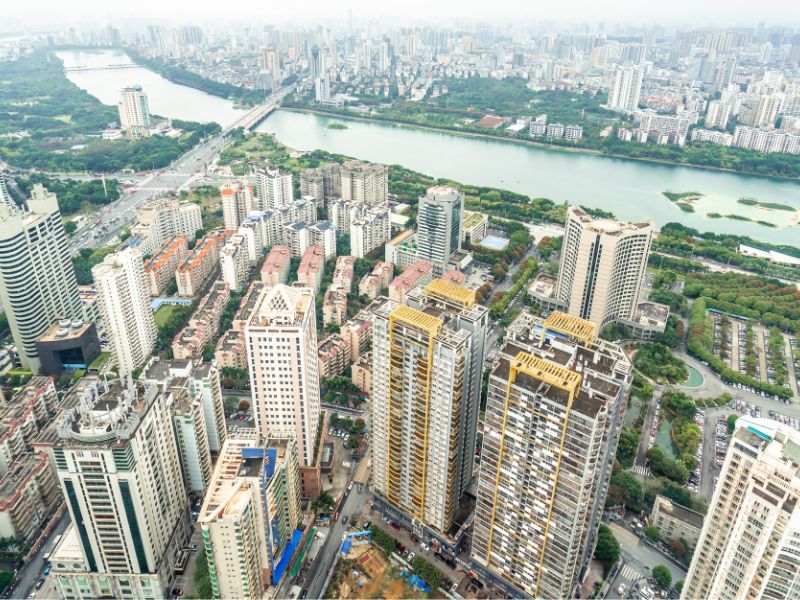
Ode To Nanning
In Nanning’s embrace, travelers find delight, A city vibrant, bathed in nature’s light. Where cultures blend, and heritage is seen, Nanning, a destination, serene and green.
Gentle breezes caress the Yongjiang River’s flow, As ancient temples whisper stories of long ago. In Guangxi Museum, history’s tapestry unfurled, Revealing the treasures of this enchanting world.
Lush parks invite, with blooming flowers fair, Qingxiu Mountain’s serenity fills the air. Climb its trails, gaze upon the city’s sight, A panorama of Nanning’s charm and might.
Streets alive with colors, markets filled with cheer, Tantalizing aromas, flavors ever so clear. Sample the cuisine, a gastronomic delight, Guilin rice noodles, a taste that takes flight.
In ethnic villages, traditions come alive, Zhuang and Yao cultures, so vibrant, so thrive. Longji Rice Terraces, a marvel carved with care, Witness nature’s artistry, a sight beyond compare.
From Detian Waterfall’s thunderous cascade, To Yangshuo’s karst peaks, nature’s accolade. Nanning’s surroundings, a tapestry of wonder, Inviting explorers to ponder and wander.
So come, wanderers, to Nanning’s open door, Discover its secrets, its treasures to adore. In this city of charm, let your spirits soar, Nanning, a traveler’s paradise forevermore.
